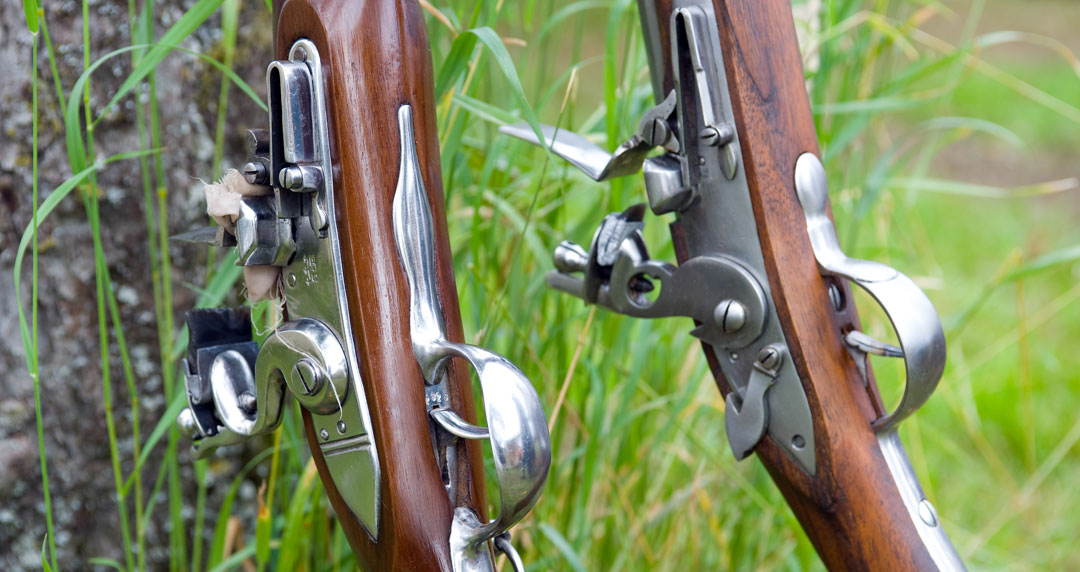RIFLES, CARBINES AND MUSKETS
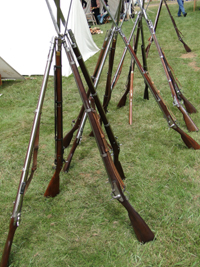 The Civil War marked the transition from muskets (muzzle-loading, smooth-bore long guns) to rifles (shorter weapons, generally breech-loading, with spiral ridges inside the barrel to impart a spin to the bullet or ball as it left the barrel). The rifled muskets used during the war were an interim step between these two, still muzzle-loaded but having rifled barrels.
The Civil War marked the transition from muskets (muzzle-loading, smooth-bore long guns) to rifles (shorter weapons, generally breech-loading, with spiral ridges inside the barrel to impart a spin to the bullet or ball as it left the barrel). The rifled muskets used during the war were an interim step between these two, still muzzle-loaded but having rifled barrels.
Click here for a glossary and diagram of a musket
The rifled weapons were much faster and more accurate than the older smooth bore weapons, but development of the newer weapons had been delayed by shortcomings in the available ammunition. This was remedied by an advance in ammunition in the 1840s known as the Minié Ball.
Click here for more information on Minié Ball ammunition
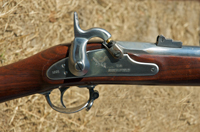 Springfield Model 1861
Springfield Model 1861
The Union forces favored the Springfield Model 1861 rifled musket, the most widely-used long gun in the Civil War. The barrel was 40 inches long and it weighed 9 pounds.
It was loaded using pre-packaged paper cartridges containing a measured amount of gunpowder and a Minié bullet. The cartridge was ripped open by the soldier, often with his teeth, and the powder poured down the barrel. It was followed with the Minié ball (and sometimes the paper package as wadding), the whole rammed to the base of the barrel with the ramrod attached to the weapon.
British Pattern 1853 Enfield
Early in the war Confederates often used civilian arms including smooth bore muskets or hunting rifles like the Kentucky or Hawken due to the shortage of military weapons. These remained were still used as late as 1863. By the end of the war, however, the weapon of choice for the South was the Enfield 1853 rifled musket.
The British Pattern 1853 Enfield rifled musket was used by both the North and the South, and was the second most widely used infantry weapon in the war. Other variations of the Enfield were less common, such as the Pattern 1858 and 1860, but used by skirmisher and sharpshooter units. Like the more-popular Springfield, the Enfield had a 40-inch barrel, weighed 9 pounds, and was otherwise similar to the Springfield in general design and function.
Other Long Guns Used in the Conflict
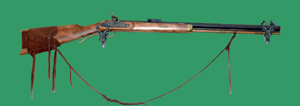 Hawken
Hawken
Known as the ‘plains rifle’ or ‘buffalo gun’, the Hawken was a muzzle-loaded weapon developed during the 1820s and used in the early days of the Civil War, especially by the South. It was eventually replaced after the War by breech loading guns such as the Henry and Sharps.
Sharps
Sharps rifles were a series of large caliber, breech-loading rifles that began with a design by Christian Sharps in 1848. The military version was known as the Berdan Sharps, a rifle used by marksmen during the Civil War. The carbine, a shorter and lighter version, was favored by cavalrymen.
Henry
The Henry was a .44 caliber lever-action, breech-loading rifle designed by Benjamin Tyler Henry in 1860. The firing rate was a blazingly-fast 28 rounds per minute, and this feature made the weapon much sought-after in the war. The Confederates facing this prodigy of firepower called it the rifle “…they load on Sunday and fire all week.”
BAYONETS AND KNIVES
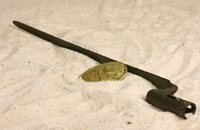 Bayonets
Bayonets
The Springfield rifle favored by the Union army came equipped with a three-sided spike bayonet, similar to the type of bayonet used with older smoothbore muskets. More modern flat or single-edged bayonets did not come into use until after the Civil War.
The bayonet for the Enfield rifle used by the Confederates was also triangular in cross-section.
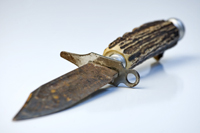 Knives
Knives
The Confederate forces also used Bowie-type knives in place of bayonets and in hand-to-hand combat. The term “Bowie” is generic, referring to a fixed-blade sheath knife with a cross guard to protect the wielder’s hand and a clip point (having the appearance of having the first third of the blade ‘clipped off’). It is named after Colonel James ‘Jim” Bowie, who popularized the design. He later died at the Alamo in 1836.
REVOLVERS AND DERRINGERS
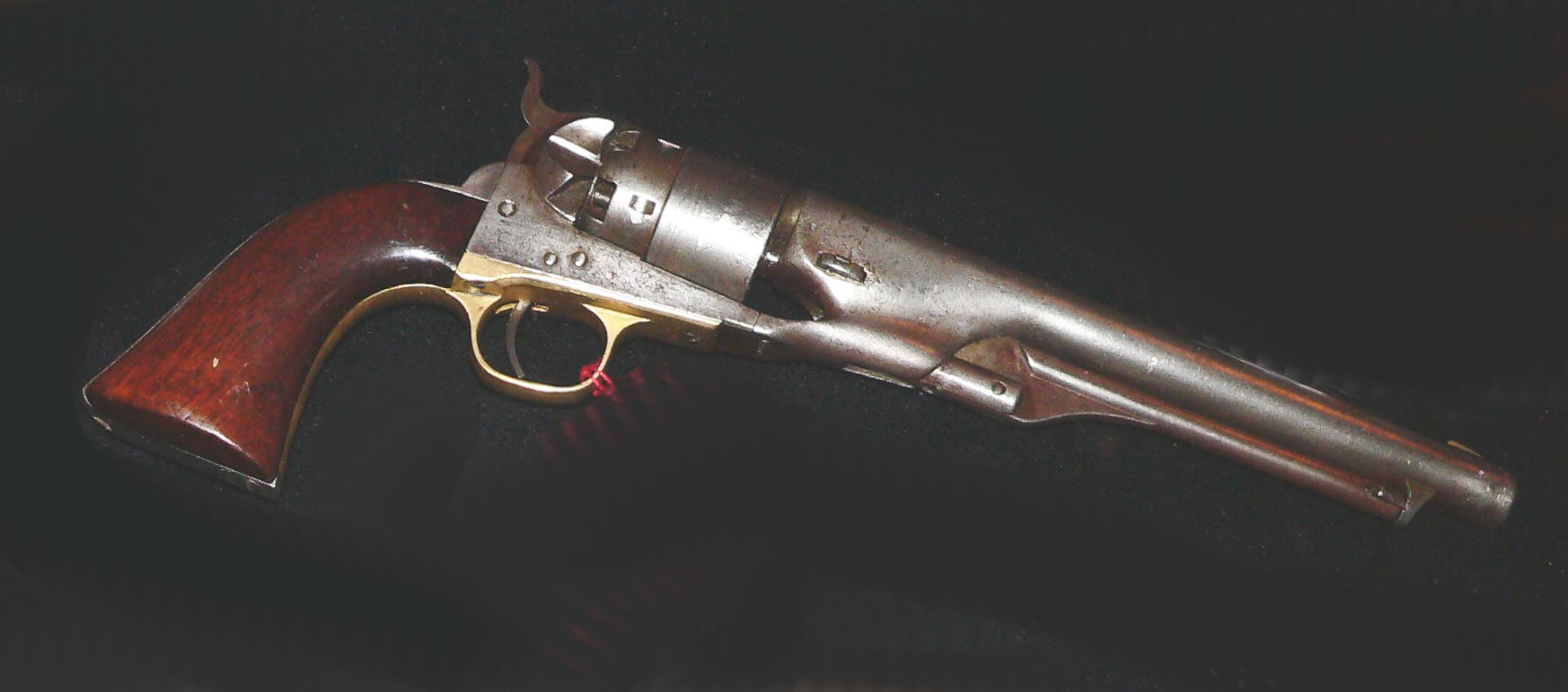 Colt Army Model 1860
Colt Army Model 1860
Samuel Colt did not invent revolvers, but he designed the first successful ones, which were a great advance over the older single-shot pistols.
The Colt Army Model 1860 was the most popular sidearm in the Civil War, a .44 caliber muzzle-loading revolver. Over 125,000 of these weapons were purchased by the US Government for use in the war. It was a single-action, six-shot weapon with a range of 75 to 100 yards.
The cylinder was loaded from the front or muzzle end, with a combustible cartridge filled with black powder glued to the bottom of a conical bullet. The whole charge was seated by inserting a loading lever pivoting from under the barrel of the revolver.
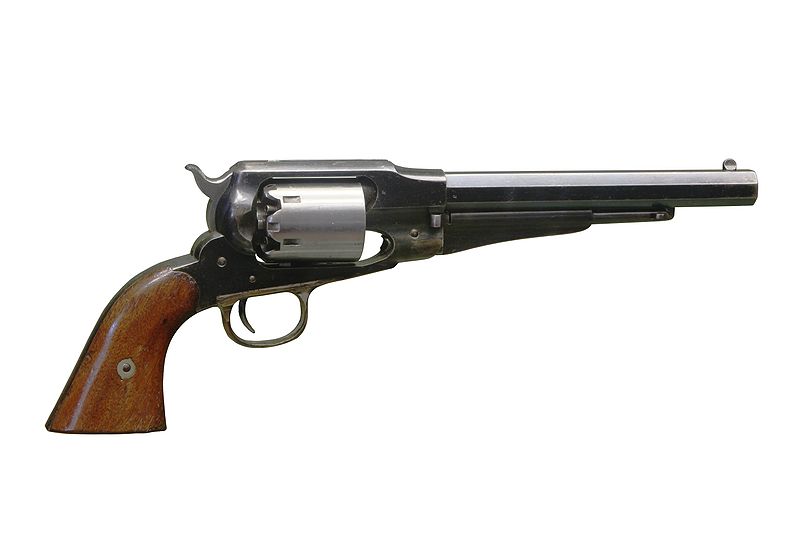 Remington 1858 pistol
Remington 1858 pistol
This side arm was the second most popular of the war, and after a fire in the Colt factory in 1864 became the main weapon issued to the troops. Like the more popular Colt, it was a single action six-shooter, .44 caliber.
It was prized for the innovative removable-cylinder feature, which allowed a spare to be pre-loaded and switched onto the frame during combat. This reduced reloading time from nearly three minutes to 12 seconds or even less, a huge advantage in the heat of battle.
Variations of the basic model appeared through 1862, due primarily to suggestions for improvements from the US Army. The Remington was expensive, but well worth it.
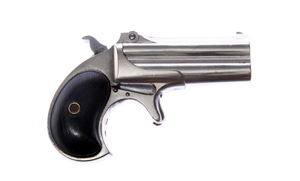 Derringer pistol
Derringer pistol
A generic misspelling of the earliest manufacturer’s name (Deringer), these small hand-guns were often carried as a secondary or backup gun by soldiers in the war. Originally a single-shot, muzzle-loading weapon, the basic design rapidly evolved into a variety of models including multi-shot, etc. (1887 model shown)
They were also the weapon of choice for women, due to the gun’s small size.
FURTHER READING AND OTHER REFERENCES
Cole, David. Survey of U.S. Army Uniforms, Weapons and Accoutrementshttp://www.history.army.mil/html/museums/uniforms/survey.html
(Posted February 2013)
